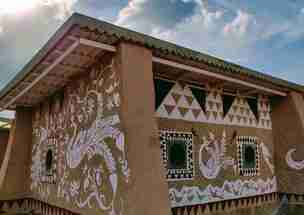Today is the International Day of Women and Girls in Science. It is my wish that this becomes a normalized day; where women in science or any other human endeavour is not an exception. We have made some progress in the last few years; but much more needs to be done.
Years ago, I was moderating a workshop for developing the state textbook for ICT integration for school education; some of the finest minds in education were discussing the details of how to design, develop and structure the content. Not a single woman teacher in that group; and I wonder if anyone even noticed. This is by no means a unique setting. In tens of workshops with teachers and master trainers for mathematics and science, I would often be the only woman – perhaps a couple of more teachers. It should not be surprising to see this, as you consider the educational choices of girls leaving school; the majority prefer to not take up science.
This is a societal challenge – and our educational processes are accountable for an answer. The solution needs to address multiple issues that impact the participation of girls in science, mathematics and technology. The availability of role models, particularly the teacher, the quality of instruction, access to educational institutions, the organization of the science curriculum and the pedagogies that are adopted, all of these influence the way girls perceive science and more importantly themselves in science.
The self-efficacy beliefs of the teachers and their attitudes to science and education, in my view, are the most important influencers in a young girl’s decision to pursue science. Science teachers often do not see themselves as people doing science, they are themselves impacted by the gendered paths that they were forced to take as a career. Many times, the science teacher is someone who was encouraged to take up teaching because it is a good profession for girls and their own confidence in pursuing and articlating questions of science would have been subjected to the hegemonic structures in higher education. Add to this the woefully inadequate science education infrastructure that is present in most schools – you have a guaranteed situation where the teacher herself lacks the confidence to explore, take on projects and “do” science. While this part is easy to understand and many might also want to jump on to this aspect, a more subtle aspect must also be kept in mind. The process of education is that of opening up your mind – questioning, exploring and learning. Science education exemplifies all these and when young girls who have often been forced to remain quiet most of their life, move on to become science teachers, it is not hard to see what kind of a learning culture can be enabled in a classroom. Teachers, being conditioned in the way society thinks of girls and boys, may often carry these perceptions, and perhaps even communicate these, even if unwittingly. It requires an extraordinary, self-aware teacher who can transcend this.
The history of science, the commonly known version atleast, offers no respite. A reading of all your science textbooks in school would convince you that there were no women in the world, let alone women pursuing science. The roles played by women – the challenges they encountered to be there – do not even find a footnote reference in the textbooks. Rosalind Franklin, Cecilia Payne, or closer home, Dr Janaki Ammal are not even mentioned in the textbooks other than as a matter of detail. Of course, this begs the larger question of how the story of science itself is presented- devoid of the social and cultural context of science, leaving open much larger questions of how can science education be mapped to lived experiences and knowledge held by communities. Gendering the curriculum cannot ignore the need to make the curriculum diverse ad inclusive. But that is not the subject matter of this article; let me simply suffice it to say, it is upto the teacher to bring in these perspectives into the science classroom.
Remagining the curriculum and transforming pedagogies is of utmost importance; something an empowered teacher can and must do. Children – girls and boys – are fascinated by the world around them and it is important to organize the science learning paths for children, set in the contexts where they are located. Focus on building the skills of doing science is essential and the curricular experiences are to be designed to build these skills. A simple activity like taking the students out to survey the local vegetation and document can lend itself to increasing levels of content and process complexity; not to mention the enormous self-esteem impact it will have on students when they have generated scientific knowledge. And for girls, the very aspect of walking outside, stopping, observing and talking to someone – or building something – will have an enormous impact on their sense of self-worth. Combined meaningfully with digital tools, these processes can transform the very nature of learning in schools and open up possibilities of creation and expression.
These are not very new insights and have been highlighted in all curricula around the world. For this curricular vision to be realised, though, the teacher must first view herself as a student of science and claim her rightful role as the arbiter of the learning journey for her students.
It is time we rise upto this task; it is time that everyday belongs to the girls and women in science.

